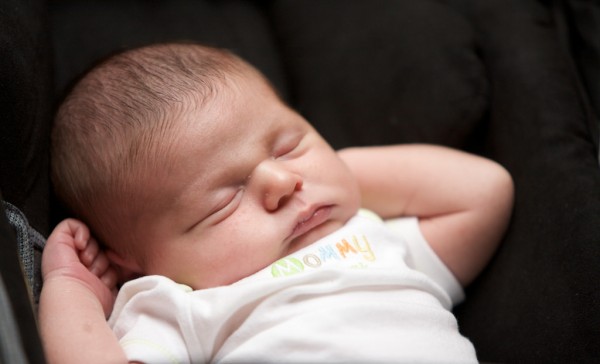By Dane Lorica, | February 04, 2017

A study suggests that depression and anxiety can be detected in infancy. (Cambridge Brewing Co./CC BY-ND 2.0)
Brain connectivity patterns can be examined to predict chances of an infant developing anxiety or depression.
In a new study researchers initially aimed at examining the functional connectivity of 65 babies who were born at full term and 57 others who were born 10 weeks earlier than their due date. MRI scans were conducted, and for premature babies, the process was performed during or around their supposed date of birth.
Like Us on Facebook
"We have found that already at birth, brain connections may be responsible for the development of problems later in life," one of the authors of the study, Dr. Cynthia Roberts, said.
After two years, the children were evaluated for the manifestation of early symptoms of mental disorders. The researchers concentrated on the fear center of the brain, amygdala, during the MRI scans. It was found out that there are no major differences observed in both full-term and premature babies although the latter showed "slightly weaker connectivity patterns."
Dr. Rogers said "brain connectivity patterns may indicate that for some children their brains are developing along a trajectory that increases their risk for mental health symptoms as they develop. The psychiatrist added that the environment and experiences individuals are exposed to may change the patterns "making it more or less likely for symptoms to develop."
The author explained that the "weaker connectivity patterns may suggest who goes on to have symptoms, but even among preterm children there is variability in the connectivity."
Some of the early symptoms of depression and anxiety in children include separation anxiety, sadness, nervousness, and shyness.
The researchers of the study published in the Journal of Academy of Child and Adolescent Psychiatry plan to reassess the participants when they reach the age of 9 and 10 for the evaluation of long-term effects of connectivity patterns.
"We can evaluate whether there are experiences these children have while in the hospital or early infancy that change these patterns for better or worse that we can aim to modify," Rogers said.
-
Use of Coronavirus Pandemic Drones Raises Privacy Concerns: Drones Spread Fear, Local Officials Say

-
Coronavirus Hampers The Delivery Of Lockheed Martin F-35 Stealth Fighters For 2020

-
Instagram Speeds Up Plans to Add Account Memorialization Feature Due to COVID-19 Deaths

-
NASA: Perseverance Plans to Bring 'Mars Rock' to Earth in 2031

-
600 Dead And 3,000 In The Hospital as Iranians Believed Drinking High-Concentrations of Alcohol Can Cure The Coronavirus

-
600 Dead And 3,000 In The Hospital as Iranians Believed Drinking High-Concentrations of Alcohol Can Cure The Coronavirus

-
COVID-19: Doctors, Nurses Use Virtual Reality to Learn New Skills in Treating Coronavirus Patients







